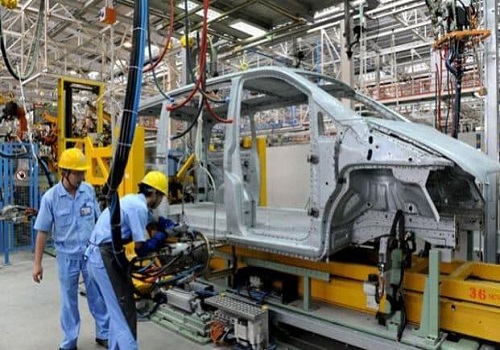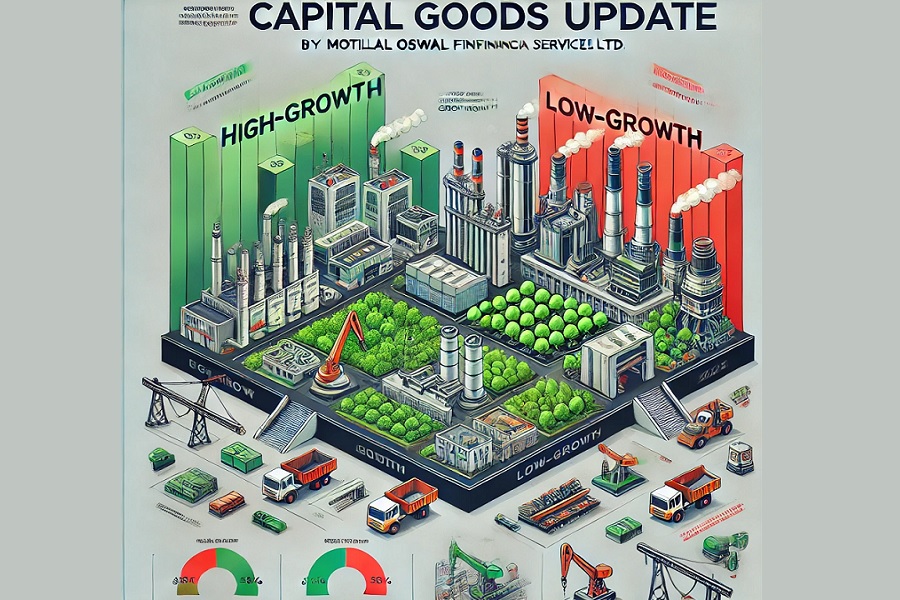Capital Goods Sector Update : Time to be selective - Motilal Oswal Financial Services

Time to be selective
Shifting priorities
With a weaker capex growth of 7.3% for FY25RE and 10% growth for FY26BE, we believe the industrial sector will face challenges in growing inflows at the same pace as it did until now when capex growth was 30% during FY21-24. This 10% capex growth for FY26BE is also largely driven by higher allocations to other areas, such as innovation schemes, while allocations for roads and railways have remained flat for FY26BE. We, thus, believe that it would be prudent to be selective now for the capital goods sector, focusing on companies that are relatively less impacted by slower growth in government capex or have created alternate growth areas that can, to some extent, offset the impact of slow government spending. We align our valuation multiples to bake in lower valuations due to lower government capex and lower-than-expected private capex so far. We downgrade Hitachi Energy and Thermax to SELL, and Siemens to NEUTRAL. We continue to remain positive on areas such as power T&D, defense, data centers, and electronics, and would prefer L&T, ABB, and Cummins in the large-cap industrial space and Bharat Electronics in the defense space.
Sector view: Selective stance now
* Though we believe that the underlying thesis on capex, particularly in power T&D, renewables, defense, and high-growth areas such as data centers, electronics, semiconductors, PLI-led capex, and battery storage—continues to stay but with lower-than-expected overall capex growth of 10% YoY for FY26, we do perceive risks to our assumptions on order inflows for the industrial sector. Additionally, with private capex across base industries yet to show signs of meaningful improvement, near-term support for lower-thanexpected government capex allocation is not visible.
* Among our coverage universe, companies with high exposure to railways, water, road construction, and private capex are likely to be more impacted by lower order inflows over the next 1-2 years. In contrast, companies focused more on power T&D, renewables, defense, and high-growth areas will be relatively better placed.
* Given this scenario, we would now be selective in our view on the capital goods sector, with a more positive bias towards players with a diversified mix towards higher-growth areas as well as those involved in defense indigenization. We align our valuation multiples to bake in lower valuations due to lower government capex and lower-than-expected capex so far in the private sector. We would prefer L&T, ABB, and Cummins in the large-cap industrial space and BEL in the defense space
Major announcements in the budget for the sector
In the Union Budget 2025-26, the government has maintained its total capex outlay at INR11.2t, largely the same as in FY25BE. However, FY25 capex has been revised downward to INR10.2t. The allocation under key heads such as Railways (INR2.5t) and Roads (INR2.7t) remained flat vs. the revised estimate for FY25, while the capital allocation for Defense saw a notable hike of 13% to INR1.8t. Key announcements included asset monetization over 2025-30 to raise funds worth INR10t, the continuation of interest-free loans to states for capital investments, incentives for shipbuilding, nuclear energy, and power sector reforms.

For More Research Reports : Click Here
For More Motilal Oswal Securities Ltd Disclaimer
http://www.motilaloswal.com/MOSLdisclaimer/disclaimer.html
SEBI Registration number is INH000000412










More News

Financials Sector Update : PSU Banks - Resetting to a new normal in profitability by Motilal...













